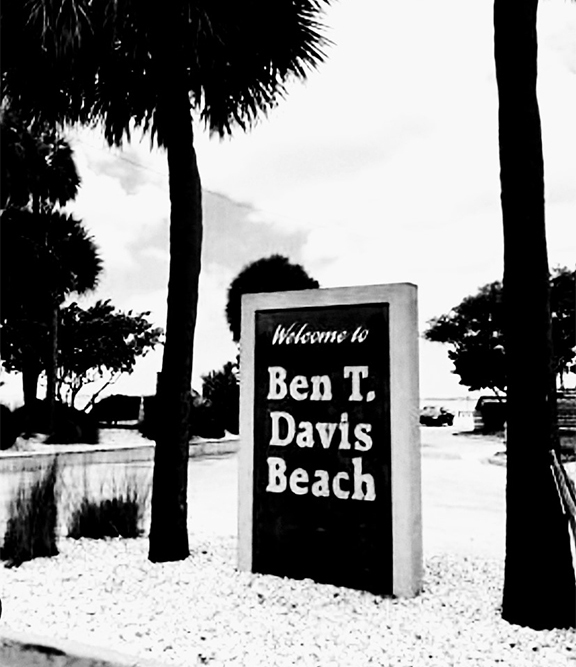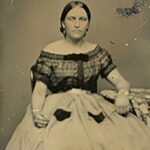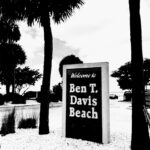 Tampa businessman Capt. Ben T. Davis knew a good plan when he saw one. Why not give old George Gandy and his new bridge a run for the money and offer beach-bound tourists a more direct link between Tampa and Clearwater, charging, of course, a toll for the service—a quarter, one way for a car and driver, plus a nickel per passenger. Without a bridge, the only land route took drivers on a 30-mile loop through Oldsmar and then crossing to the south, or over the Gandy Bridge, which was just as far. But Ben Davis thought it was too much of a detour. A shorter route—his route—was what was needed.
Tampa businessman Capt. Ben T. Davis knew a good plan when he saw one. Why not give old George Gandy and his new bridge a run for the money and offer beach-bound tourists a more direct link between Tampa and Clearwater, charging, of course, a toll for the service—a quarter, one way for a car and driver, plus a nickel per passenger. Without a bridge, the only land route took drivers on a 30-mile loop through Oldsmar and then crossing to the south, or over the Gandy Bridge, which was just as far. But Ben Davis thought it was too much of a detour. A shorter route—his route—was what was needed.
Davis also knew what he was doing when it came to dredging; it had become his primary business His title of Captain was earned while working out west for the Standard Dredging Co.
He attended the University of New Mexico becoming one of its first engineering graduates. Ben Davis came to Florida with a solid engineering reputation earned on projects in both Texas and in Mexico, where he helped design that country’s first practical railroad.
In 1927, he acquired the necessary Florida State clearances and made sporadic progress on his causeway for the next few years. In between paying jobs, Capt. Davis kept his dredging crews busy by having them work on his own project at the northernmost end of Tampa Bay. But the Depression and the Florida land boom slowed any significant progress. Then about five years later, pledging his construction equipment as collateral, he raised capital from friends, and most importantly, received a $600,000 loan from the Federal Reconstruction Finance Corp. Davis was able to put men back to work, endearing him to many within the Tampa and Clearwater communities for years to come.
For a final cost of less than $1-million, he completed the northernmost crossing of Upper Tampa Bay in 1934 and named it after himself, the no frills Ben Davis Causeway. Corita Davis, the builder’s daughter had the honor of throwing open a gate decorated with palm leaves, bougainvillea and Spanish moss, allowing a motorcade to make its way to Clearwater Beach for an afternoon celebration picnic. More than 45 mayors and five-dozen newspaper editors were invited to the festivities.
During WWII, as had been done elsewhere, the War Department seized the bridge, paying Davis $1.1 million and eliminating tolls as part of the war effort. Following World War II, and now under state control, the causeway was renamed to honor Clearwater Beach resident and U.S. Rep. Courtney W. Campbell, for his efforts to beautify and fund needed repairs to the causeway. Some folks in the Davis family were unpleased with the renaming, and maybe as a consolation, the beach at the east end of the causeway would be named in honor of the builder, Ben T. Davis. With the addition of picnic shelters and easy access to convenient fishing areas, the roadway to the beach is a popular family destination.
It’s highly unlikely that this causeway could be built today because of current environmental protection policies, and it certainly would cost more than a million dollars to build. The structure altered the natural state of the extreme northern tip of Old Tampa Bay, affecting the tidal flow and the normal exchange of waters. On the positive side, the area has become bird watchers paradise, with literally dozens of species found there.



